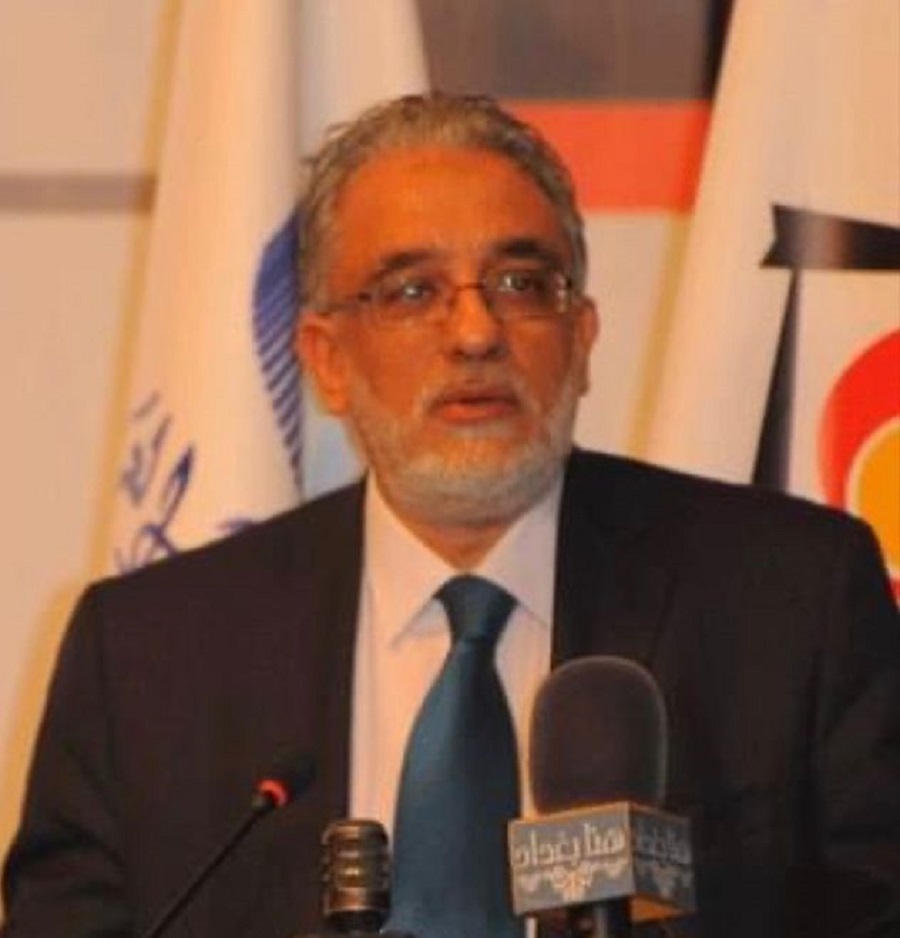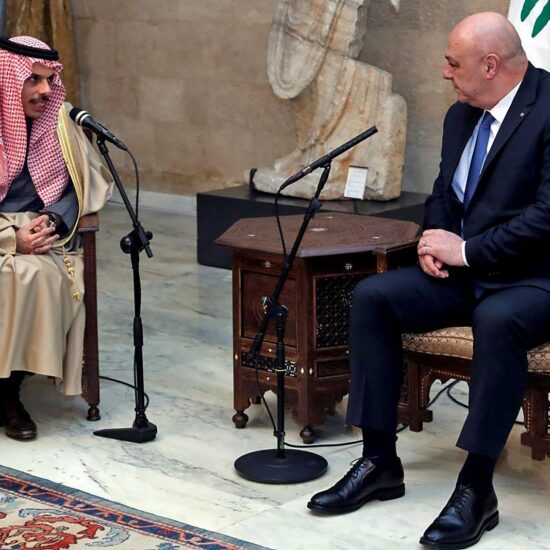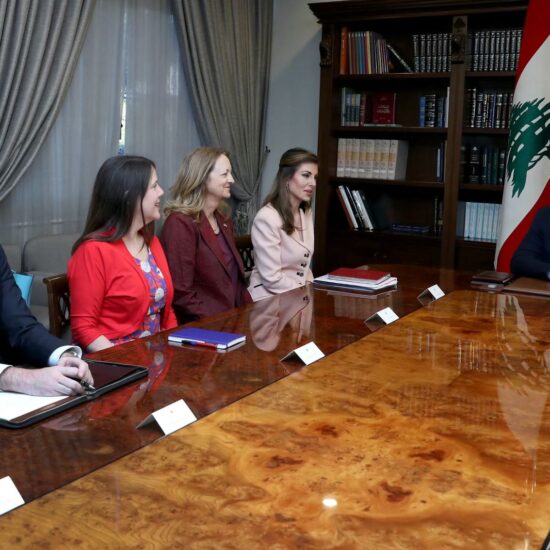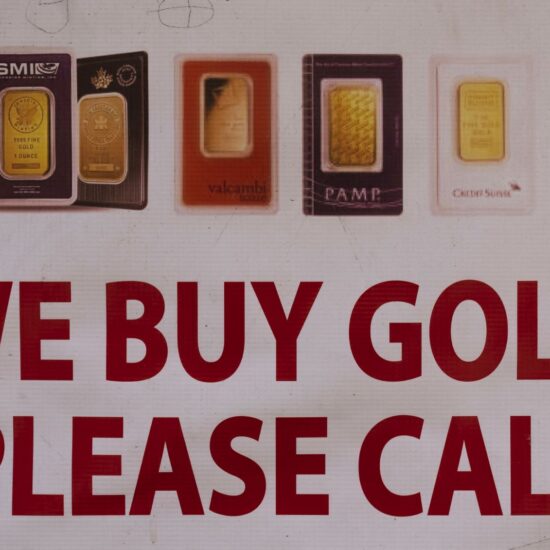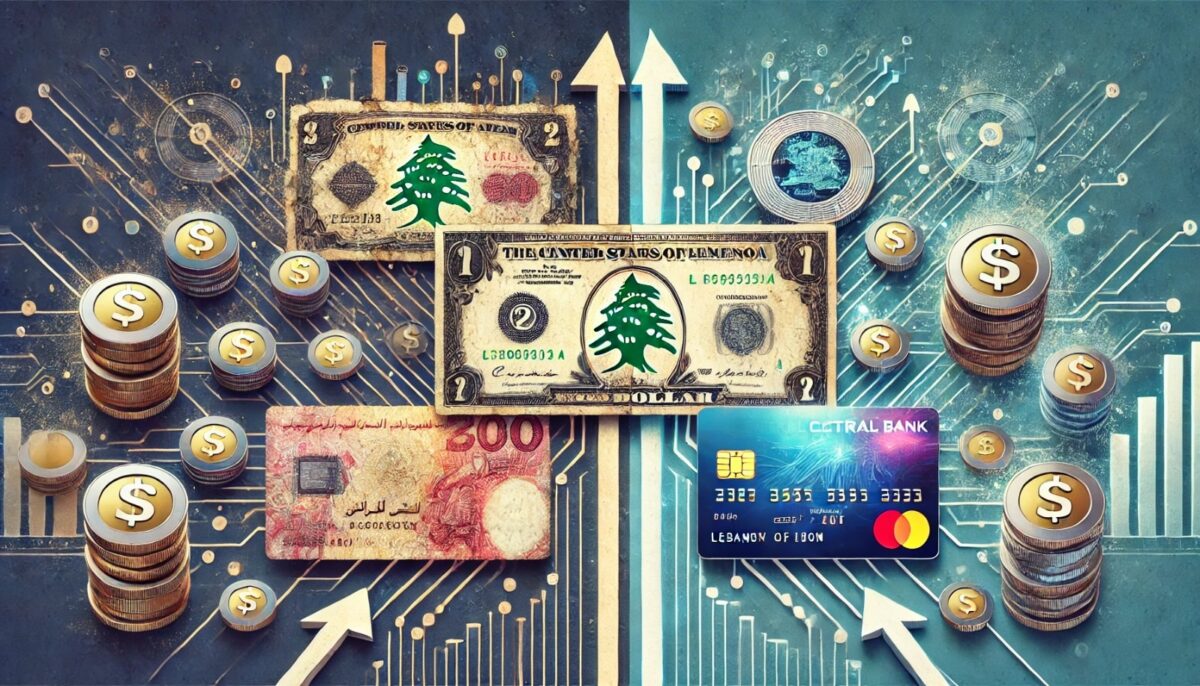
We Miss You (But Not Your Money), “Fresh” dollars for “Fresh” credits
There has been more mixed signals on the Banque du Liban’s (BDL) monetary policy and money supply management; seemingly the same policy that led to the 2019 crisis is being ruminated nonchalantly over and over.
The Acting governor Wissam Mansouri’s policies were not able to produce any breakthroughs on blocked deposits in the banking sector nor measures were taken to follow on major scandals disclosed by the Audit report of the BDL nor the famous Usd8bln commissions of OPTIMUM INVEST SARL . However it is clear that the new BDL “alma matter” seeks to dethrone the old book accounts of post 2019 and transmute to a new payment system based on fresh dollars and non-resident deposits.
A new payment system?
NOWLEBANON has learned that the BDL is seeking parliamentary approval to allow banks to introduce credit facilities in “fresh” dollars with high interest rates to start compensating for their losses. This new payment system will allow repayment of loans in same fresh currency. Mansouri has been disseminating openly his will to enact a new banking credit mechanism despite being reluctant to rule over the state of deposits and credits since the 2019 debacle.
“Fresh” Dollars refers to amounts denominated in United States Dollars in the Lebanese Banking system that are either in cash (banknotes) or received via international wire transfer after October 17, 2019. Till date, these amounts are not subject to any transfer or withdrawal restrictions. The term “Lollar” refers to a unit of currency used to designate sums of money deposited with Lebanese banks, theoretically denominated in United States Dollars but restricted from cash withdrawal or international wire transfer outside the Lebanese banking system because of a de-facto capital control imposed by Lebanese banks and/or any other reason beyond the control of Lebanese depositors, as the case may be from time to time.
But what will be the source of funding of these new loans knowing that banks are short of paying their depositors? How safe is it for the profit and loss of the banks?
The move is surrealist as the beloved banks once bastions of financial security, havens for hard-earned lira (well, maybe a few years ago) are exerting complete schizophrenic attitude. After a long and dramatic separation (where you held onto our cash with the fervor of a toddler gripping a juice box), you’ve finally decided to grace the public with their presence offering a brand new, revolutionary product: credit!
Those bastions of financial security, the Fort Knox of your childhood piggy bank funds (well, at least until recently) are back, the very institutions that nickel-and-dimed you on ATM withdrawals, now want to be your financial BFFs. They’re practically waiting impatiently to throwing credit instruments at you, with interest rates so high they’d make a loan shark blush. It’s like the ultimate magic trick: make your savings disappear, then reappear as a shimmering mirage of debt!
Let’s take a closer look at this “generous” offer.
Remember that little incident where your life savings vanished faster than a magician’s rabbit? The banks, with impressive Houdini-esque skills, made billions disappear into a puff of financial smoke. They claim it was “unforeseen circumstances,” like a global pandemic that definitely wasn’t predicted by every economist since the invention of money.
But fret not, for the banks have emerged, blinking in the sunlight, with amnesia so convenient it would make a goldfish jealous. They seem to have forgotten the whole “locking your money in a vault and throwing away the key” debacle.
The banks, ever the masters of public relations, will be re-entering the market with slogans like “Let’s rebuild Lebanon together!” Translation: “We messed up, but hey, at least you can buy some inflatable pool toys on credit!”
To take a new risk in credit enhancement the banks need a cover from the BDL , a new law to use only credit in fresh dollars and not permitting to pay back loans in “lollars” stuck in the system since 2019.
Also at stake interest rates are enough to make your wallet weep, and the repayment terms are stricter than a nun’s dress code.
You might be entitled to ask “Isn’t this just creating a cycle of debt?” To which the banks, with a patronizing smile, would reply, “Silly customer, that’s the point!”
The plan seems to be this: lure you in with promises of a luxurious lifestyle, shower you with debt, and then, when you inevitably default, seize whatever collateral you haven’t already sold to keep up with the payments. It’s a financial game of whack-a-mole, except the mole is your bank account, and it keeps popping back up, grinning maniacally.
The move to the favorite use of “Fresh Dollars” has been gradual as the BDL has recently issued Circular 165, which permits depositors to make payments by check starting June 1st, 2023, as long as their accounts are in either fresh US dollars or Lebanese lira. To support this initiative, BDL has introduced a new clearing system, distinct from the one dedicated to pre-crisis deposits. This circular serves a dual purpose: it encourages customers to open new accounts in both Lebanese pounds and US dollars, while also aiming to decrease the country’s dependence on cash and stimulate economic recovery. As such, in May 2024, the cumulative number of checks issued from fresh accounts reached 8,789, of which 5,840 checks are in USD currency amounting Usd79.6M and 2,949 checks are in LBP currency amounting LBP 4,673B.
On August 17, 2021, the BDL issued basic circular number 159 (basic decision No: 13353) that imposes restrictions and reporting requirements on banks operating in Lebanon, with regard to some foreign exchange operations. Since the beginning of the financial crisis in Lebanon and the decline of the Lebanese Pound (“Lp“) versus the United States Dollar, there have been speculations around banks buying “fresh” Dollars from their clients or from the parallel market in exchange of Lp or Lollars.
The Circular prohibits banks operating in Lebanon from accounting funds received by their clients in foreign currency (in cash or via international wire transfer) in any way whatsoever more than their initial (nominal) value. This means that banks may no longer convert Fresh Dollars into “Lollars” using traditional multipliers representing the LBP/USD foreign exchange rate.
In another move to consolidate a new system of ePayment, the circular gave the right to buying foreign currencies from the parallel market and for banks to buy foreign currencies from the funds wired to their clients from abroad on the current market rate, for mid and long-term investment purposes; or in order to improve their foreign currency liquidity ratios; or to pay liabilities due outside Lebanon.
The banks were also given the right to buy and sell directly or indirectly accounts in foreign currency.
Accordingly, banks may no longer buy or sell checks (whether in Lollars or LBP) in exchange of Fresh Dollars, or cash LBP. Does this mean that banks have been involved in such transactions prior to the issuance of this Circular? It is worth noting here that in practice, most banks do not allow their clients- or at least make it very difficult for them- to buy or sell checks for compliance reasons.
Experts say while this Circular appears to impose prohibitions on banks in relation to certain (controversial) transactions, we believe that in reality it is an a contrario legitimation or validation of such transactions, but within some boundaries
The so-called “cash cows” of depositors
The new BDL ePayment system rationale has allowed depositors to benefit from two circulars: 166 and 158, on the condition that they sign a waiver allowing BDL to lift banking secrecy off their accounts. This means that BDL can monitor subsequent account activities and determine circular eligibility.
Circular No. 166 allowed depositors to withdraw Usd150 in fresh US dollars from their dollar-denominated bank accounts every month for accounts opened between Oct. 31, 2019 and June 30, 2023 and balances accumulated between Oct. 31 2019 and June 20, 2023 on accounts opened before October 2019. However, whether clients have 10 accounts or just one, in one bank or many, they will only be able to receive one payment of Usd150 every month, up to a limit of usd4,350 — that is, 29 payments of Usd150.
Also here comes Circular No. 158, first adopted in June 2021, allows withdrawals of Usd300 to Usd400 in “fresh” dollars from foreign currency bank accounts opened before Oct. 30, 2019 (“lollars” accounts).
In other words, what used to be considered a ““lollar”” can be withdrawn at its real “fresh dollar” value, at up to $300-400 per month.
Depositors who signed up for the circular before June 30, 2023 can benefit from Usd400 every month. Meanwhile, those who chose to benefit after July 1, 2023 can access a monthly of Usd300.
Liquidity management “Mansouri” style
A thorough reading of BDL announced figures denotes a real “luring” of the stats.
Firstly In a much anticipated move the BDL ratified last week Circular No. 166, which went into effect on Feb. 3 and circular 158 which went into effect in 2021, allowed withdrawals of Usd300 to Usd400 in “fresh” dollars from foreign currency bank accounts opened before Oct. 30, 2019 (considered now “lollar accounts”). This marks the third time Circular 158 gets renewed since its inception.
The circulars meant to mark the latest in a series of circulars issued since the beginning of the crisis in 2019, meant to “salvage” the losses incurred by depositors and relieve financial pressures.
But … How many benefitted from those circulars? And what are the real capital inflows to the economy from those circulars.
NOWLEBANON analysis on the issue confirm a BDL manipulation on inflating figures, firstly contrary to its official statement the circulars did not free Usd1.3billion to the depositors since these circulars are pumping the BDL “fresh dollars” acquisition from the open market, therefore, the figure that claimed that there were some 180 000 depositors who profit from the circular goes against former governor Salameh saying a year ago, that only 93000 depositors are still to be included in this tranche. Moreover these new depositors receive Usd300 not Usd400 monthly payment contrary to the BDL statement. To this date, there are no official numbers indicating the total number of fresh dollar accounts versus the number of “lollars” accounts in Lebanese banks.
Second the BDL and state monthly revenues can be broken down to the following: Usd 260mln as government expenses Usd60 mln cost of circulars 166 and 158 Usd50mln to free up deposits as credits in Lp to free “lollars” in accordance to circular 150. Meaning that the BDL and state have some USd500mln in direct revenues contrary to the announced Usd6bln announced by BDL!!!!
Approximately Usd20 billion were freed in deposits, which is equivalent to half of the Usd40 billion that banks had loaned to the private sector before October 17, 2019, as no political or financial official offered or dared to come forward Populist, political and self-interested reasons, to demand amending the “payment” clause in the currency in which it was borrowed.
Figures from the BDL balance sheet denotes that – with the new realistic denotation of the exchange rate – total liabilities of the Bank of Lebanon are increasing more than the increase in liquid external assets. In other terms the BDL is following up on the same chronic deficit policy.
BLOMINVESTRESEARCH say that that BDL’s definition of Balance of Payments has overvalued the actual BOP in 2018 and 2019 because the change in banks’ Net Foreign Assets (NFA) was negative; whereas it has undervalued actual BOP from 2020 onward because banks’ NFA has turned positive.
The analysis denotes that change in NFA of banks reflects largely (but not totally) the private changes in the capital account as banks dominate the financial sector in Lebanon. BLOMINVEST RESEARCH underlines that the balance of payments BOP as is commonly understood is the balancing item after the current and capital accounts are accounted for, so in actual fact it would be change in NFA of BDL.
So Lebanon departs from international standards by defining BOP as the change NFA (of banks and BDL), whereas for accuracy and comparison reasons it should be change in NFA of BDL.
To understand this contention better it should be noted that the BDL balance sheet conveys some Usd63.38 million (0.42%) appreciation in BDL’s foreign assets portfolio during the first half of June 2024 to Usd15.15 billion (LBP 1,355.52 trillion).
Lebanon’s balance of payment (BOP) for 2023 recorded a deficit of around $643 million compared to a deficit of $2.64 billion in 2022.
The drop was mostly attributed to a reduction in the deficit of the current account (a country’s imports and exports and international transfers such as foreign aid) from $7.2 billion to $5.6 billion (a drop of 22 percent). The trade deficit decreased by 6.6 percent in 2023. However, Lebanon imported less that year — down by eight percent compared to 2022 — a figure that masks an even sharper fall in exports, which were down by 14.5 percent compared to 2022.
Among other things, this was caused by a rise in current transfers from Usd5.66 billion to Usd5.97 billion (mostly remittances) and a fall in the goods trade account from Usd13.62 billion to Usd12.71 billion. The fall in the BOP deficit was also due to a rise in unclassified transactions (up from Usd75 million to Usd1.62 billion).
To everyone understanding this means that the BDL is making money supply of Lebanese pounds available to banks. The mechanism itself is sufficient to raise many eyebrows since it suggests that the banks sell Lebanese pounds in the market and make the dollar equivalent to be used on circulars which in turn are
stuck in public sector deposits (known as the account 36).
Is The BDL then using public sector revenues to fill the financial deficit in banks?
Where do we stand
Alpha banks have expressed openly their willingness to activate the lending of Fresh Dollar deposits to companies and individuals who were carefully selected because of their strategic relationships as clients.
There has been a clear activity on checks clearing as the volumes of cleared checks in Lebanese Pounds and foreign currencies witnessed substantial yearly drop of 51.51% and 84.35% respectively to settle at 83,274 and 9,413 checks, by May 2024. Accordingly, the dollarization rate of checks in terms of volume fell from 25.94% in May 2023 to 10.16% in May 2024.
In more details the consolidated balance sheet of commercial banks denotes that on the assets side, currency and deposits with Central Bank represented a high figure of 78.42% of total assets; they dropped annually by 4.99% to settle at $81.32B in April 2024. Deposits with the central bank (BDL) represented 99.87% of total reserves, and decreased by 4.14% YOY, to reach $81.22B in April 2024. Furthermore, vault cash in Lebanese pound declined by 87.97% on a yearly basis to stand at $104.21M by the same period. The drop is attributed to the calculation based on the new official exchange rate of LBP 89,500 per Usd.
Claims ( credits ) on resident customers, constituting 5.63% of total assets, shrank considerably by 30.86%, to stand at Usd5.83B in April 2024. Moreover, resident securities portfolio, representing 4.58% of total assets, dropped by 33.5% in April 2024 to stand at Usd 4.75B.
On the liabilities side, resident customers’ deposits were the main tranche of the balance sheet, representing 66.47% of total liabilities; they dropped by 8.09% since April 2023 to reach Usd68.94B by the month of April 2024. In more details, deposits in foreign currencies (being 99.17% of resident customers’ deposits) declined by 4.56% YOY to reach Usd 68.36B by April 2024, additionally deposits in LBP (0.83% of resident customers’ deposits) fell by 82.98% YOY to stand at Usd575M by April 2024 especially after applying the new official exchange rate of 89,500. This reveals that Lebanon has become highly dollarized and cash based, as the dollarization ratio for private sector deposits increased from 96.12% in April 2023 to 99.31% in April 2024.
As for non-resident customers’ deposits, grasping 20.21% of total liabilities, they recorded a drop of 2.69% and stood at Usd 20.95B in April 2024. In details, the deposits in LBP fell by 88.45% to reach Usd 31.21M (after applying the new official exchange rate of 89,500) and deposits in foreign currencies declined by 1.6% to reach Usd 20.92B over the same period. In addition, non-resident financial sector liabilities held 2.56% of total liabilities and decreased by 19.17% YOY to reach Usd 2.66B in April 2024
The Grand Illusion
Don’t be fooled by the banks’ theatrics. This grand credit relaunch is nothing more than a magician’s trick. They’ve pulled a disappearing act with your money, and now they’re trying to distract you with a flashy display of credit lines.
Yes, folks, the banks are back, baby! Not to return your deposits, of course, that would be absurd. But fret not, dear customer, for they’re offering a brand new, exciting opportunity: credit!
So, before you empty your remaining crumbs for a credit card application fee, remember: these are the same folks who held your money hostage like a nervous child clinging to a balloon. Don’t be fooled by their newfound generosity. This credit card’s not a magic wand, it’s a sparkly handcuff.
The real question is: are we, the Lebanese people, the willing participants in this elaborate illusion? Will we take the bait, or will we demand what’s rightfully the hard-earned money?
We can play along in this financial farce, or we can demand a new act, one where the banks are held accountable, and our financial security isn’t just another disappearing rabbit.
Maan Barazy is an economist and founder and president of the National Council of Entrepreneurship and Innovation. He tweets @maanbarazy.
The views in this story reflect those of the author alone and do not necessarily reflect the beliefs of NOW.


